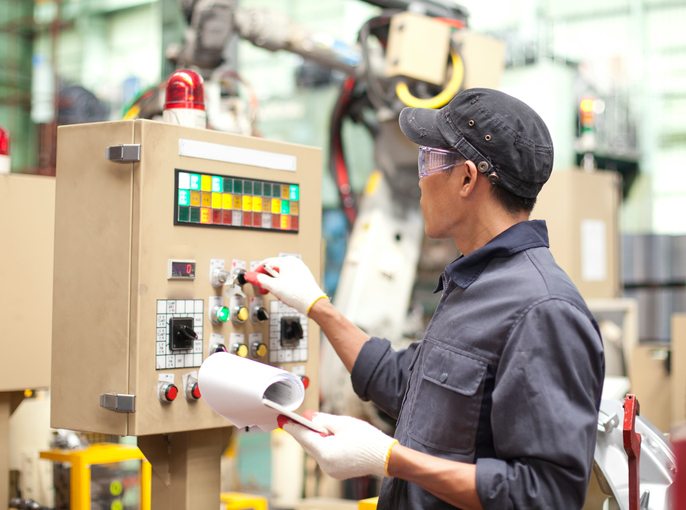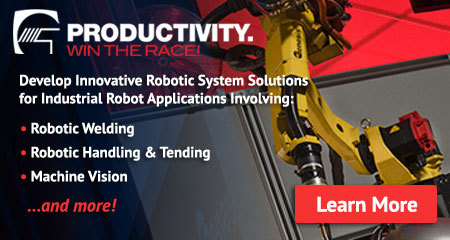Industrial robots have come front and center on the international stage as they’ve become widespread in the industrial sector. As they’ve become more powerful, more advanced and more productive, the need for robot safety has increased. There are a number of ways manufacturers can introduce safety measures in their automated operations. The type and complexity of these safety measures will vary by the robotic application, but the need for robot safety is the same nonetheless. When safety protocols aren’t followed, today’s industrial robots can be fatal. They present a danger to workers around them, particularly when employees have to interact with a robot during programming, maintenance, testing, setup or adjustment. While employee safety is the main concern, robots are just as much a danger to a business’s bottom line as they are to workers. The Occupational Safety and Health Administration (OSHA) levies hefty fines on businesses that don’t protect their workers, and an injured worker leads to expensive downtime. The good news is that industrial robot-related incidents are very rare. Between 1987 and 2016, there were only 38 incidents in the U.S. involving industrial robots, according to the U.S. Department of Labor. The best way to improve robot safety is to ensure every robotic workcell has its own customized safety features. For example, robotic welding applications call for very specific precautions like weld curtains, interlocked perimeter guards and/or pressure-sensitive safety mats. A material handling robot, for instance, wouldn’t need a weld curtain, but would likely need laser scanners to ensure a human operator can’t get too close to the robot while it’s still on. Robot safety is extremely important on any factory floor. Every robotic system needs to be assessed individually and should have custom safety features based on the types of dangers inherently present in different robotic applications. There are plenty of ways to improve robot safety, but it’s important you do so. Not just for your business, but for your employees. As robots advance in power and capabilities, they can also become more dangerous. Your safety protocols need to keep up with the progress of robotic technology. To learn more about robot safety, read our case study on upgrading safety features on a robotic welding system. CNC turning is a subtractive manufacturing process in which pieces of material are rotated as a machine tool is fed to the piece, removing material to create a finished piece. It is primarily used to manufacture parts that are cylindrical in nature. We supply custom cnc turning service and CNC turning parts manufacturing Cnc Turning,Cnc Turning service,Cnc Turning Parts,Cnc Turning Services Ningbo Rongna Technology Co.,Ltd , https://www.service-machining.comThe Importance of Robot Safety on Your Factory Floor

Why is Robot Safety So Important for Manufacturers?
Improving Robot Safety in Your Factory

What is CNC TURNING?
Items processed by a lathe will be cylindrical and must be on-centre. Turned parts can range from simple rings to complex curved components. CNC turning is the most efficient way to mass-produce these kinds of parts.
Various cutting tools can be installed within the lathe tooling head to perform different cutting operations sequentially, to produce parts in a one-pass process. Straight cuts, tapers and contours can all be created by varying the angle and depth of the cut.
RongNa CNC Turning system is capable of cutting and holding different types of materials with complete accuracy and efficiency. CNC Turning to manufacture anything from furniture to garden tools to intricate machines and parts for cars and trucks etc.
We are professional CNC Turning Service company and custom CNC Turning Parts manufacturers in China, Our CNC Turning Center help with all kinds of projects and makes cuts of any work piece by changing the angle, the material and the type of cutting tool being used.